Costa Rica’s focus on sustainability, renewable energy and conversation puts it at one of the top green countries in the world. The plethora of national parks and abundant wildlife attracts those who love nature and wildlife, especially since it’s one of the best places in the world to see animals such as Resplendant Quetzals, sloths, monkeys and pumas. With accolades such as these, millions of people come to Costa Rica every year and unfortunately, there are downsides to increased tourism.
Since we travel throughout all of Costa Rica frequently, we have become huge advocates of responsible travel. By educating ourselves and being conscious of the simple decisions we make as travelers, it can greatly help the local communities and country. Here are our 8 tips on being a responsible traveler in Costa Rica.
***Please read our Costa Rica coronavirus post for latest travel information.***
There are Amazon affiliate links in this post.
Book with CST certified companies
The Costa Rican government created the CST (Certificación para la Sostenibilidad Turística) which is their certified sustainable program that businesses can apply for. A business can receive a certain number of leaves indicating how sustainable they are according to the criteria.
They are characterized as “leaves” so a 100% sustainable company has 5 leaves, a company that does minimal practices has 1 leaf. This is a very important title and many companies strive to receive 5 leaves as it’s not just good for the environment but also good for their reputation in tourism.
So when you’re researching hotels and companies, look for those that are CST certified (they will say how many leaves they have) and you can see on the CST website which sustainable methods they implement. That way you know you’re giving your money to businesses that are doing their part to give back.
Volunteer
Volunteering in Costa Rica is a great way to give back and can truly make an impact on local communities. However, you need to do detailed research on organizations, you need to sign up for a service you are qualified for and ask yourself if you’re doing it for the right reasons.
Ask the local NGOs of volunteering programs or check the Costa Rica expats Facebook groups. Also, really think about paying to volunteer (volunteerism). Is it truly worth spending thousands of dollars to a non-profit to volunteer for a week? Or is your money better off going towards donating directly to local charities or purchasing and bringing items directly?
This is especially important when looking for organizations that work with wildlife. Since Costa Rica is famous for conservation and wildlife, unfortunately it attracts people who don’t exactly go by the book and exploit the animals. The ones to really look out for are the turtle and sloth organizations.
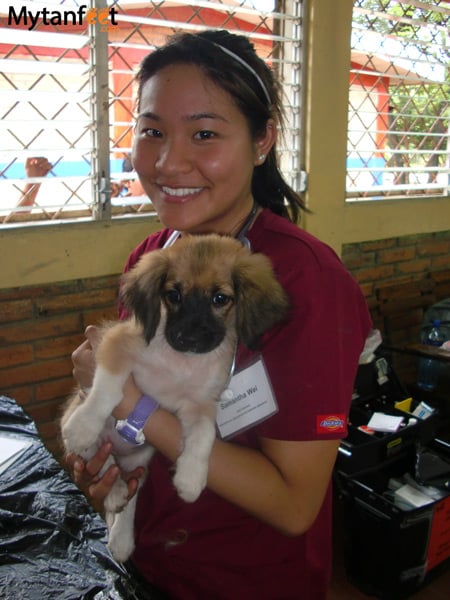
Some of the ones we recommend are Jaguar Rescue Center, Kids Saving the Rain Forest and the Sloth Institute.
If you want to donate, we recommend checking out Pack For A Purpose and Grassroots Volunteering. Many hotels in Costa Rica participate with Pack For a Purpose so you can coordinate donations with them.
No sloth selfies
One of the downsides of social media is the constant desire for more likes on a Facebook post. Animal selfies, particularly sloths garner plenty of Facebook likes but this is actually hurting them. Sloths are adorable creatures with what looks like a permanent smile (they don’t have the muscles for frowning) so it looks like they’re happy all the time, making them easy target for selfie tourism.
If any person, “rescue center/sanctuary/refuge” offers you to take a picture with a sloth, say no and report them right away. This is especially important for the sloths because being held is extremely dangerous and bad for their health. This also means that they probably stole the sloth from the wild.
Say NO to animal selfies!
This applies to when you see them in the wild too. Don’t wrangle them, touch them, pet them, pick them up or try to herd them just so you can take a selfie. The best way to enjoy seeing a sloth is just that – observing them in the wild from a distance.
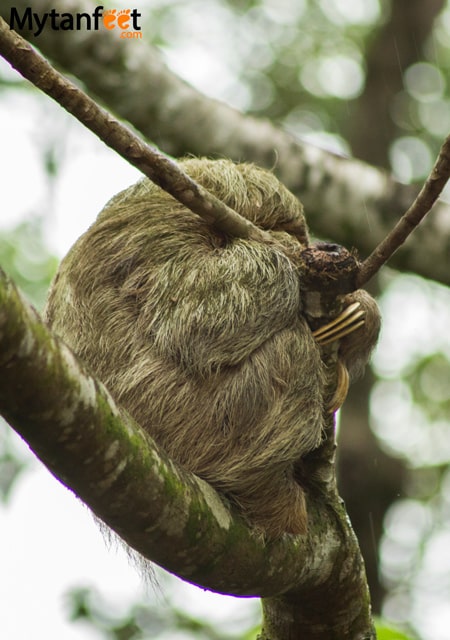
Any animal you see in the wild should be observed from a distance.
Don’t feed the wildlife
This is common sense but sadly, many tourists don’t practice it. In some areas, particularly Manuel Antonio National Park, the white face monkeys have become so used to tourists feeding them, that they have gotten aggressive and dependent. They’ll go through people’s backpacks to steal chips and cookies, which are harmful to them as it is not their natural diet.
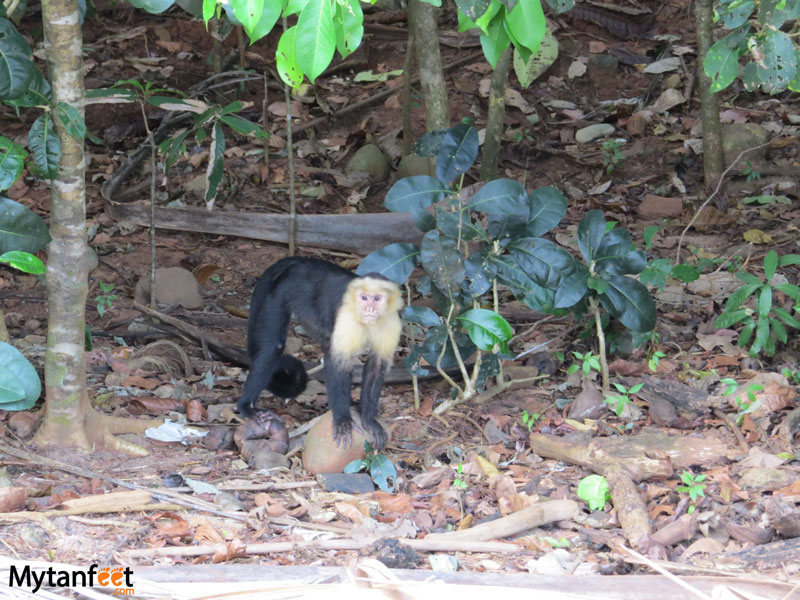
Please don’t feed any wildlife and if you see an injured animal, you can call 911 or ask a local for the closest vet or animal rescue center.
Reduce your plastic use
Costa Rica has made a new goal to reduce most single use plastic by 2021 but it’s a huge problem, plastic is everywhere. You can help reduce the plastic in the country by using cloth bags or backpacks for groceries, saying no to straws and bringing your own water bottle and filter. We always bring our Hydroflask insulated water bottles and Steripen with us.
Book with legal, certified local companies and businesses
We care deeply about making sure our dollar goes back to the local people so whenever we travel, we make sure to book with 100% local companies. Since there are many foreign companies in Costa Rica, competition in tourism is extremely high. And in countries like Costa Rica where the average salary is $800 a month, it is especially important.
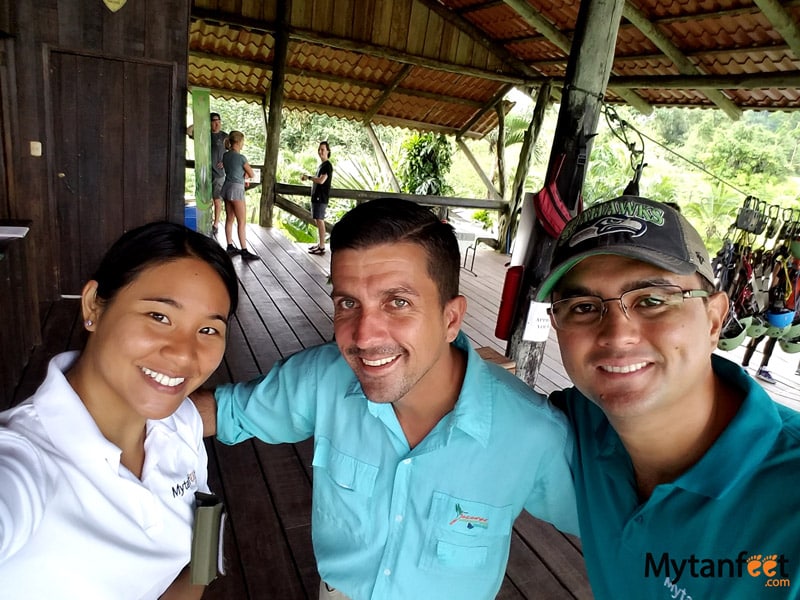
Another issue is that the competition is so strong, that many locals resort to being illegal tour operators. This is not good for Costa Rica’s tourism because that means they don’t pay taxes, they don’t have insurance and they’re not licensed. Many accidents have happened on tours with illegal operators because they offer low prices for a hike that’s currently closed due to dangerous conditions, horseback riding/ATV tours with no helmets or insurance, etc. Please do not book with illegal tour operators for your own safety.
Respect the local culture
As travelers, we must keep in mind that we are guests in a country and we need to respect their way of life, traditions and customs. Luckily, Costa Rica is a fairly laid back country but they appreciate it when travelers are mindful of their surroundings.
Learning how to say “hi, please, thank you, how are you” in Spanish can go a long ways. Costa Rica is Americanized in many aspects so people have the misconception that everything is in English or should be in English but it is not so. Spanish is the official language so don’t expect all Costa Ricans to know English. (Learn some basic Spanish here).
Research a little bit about Costa Rica before you go. Some very important things to know are that it’s not an island and they don’t have many similarities to Mexico which are the biggest misconceptions. It’s important to educate yourself about the country you’re going to visit. (Read more facts about Costa Rica here).
Shop local
When it comes to buying Costa Rican souvenirs, eating out and things like that, try to always shop local. Not only will your tourist dollar go straight into the local economy, you will gain a deeply rich and authentic experience. If you see a street vendor, go up and talk to them. Ask them if they hand made the products, what they use, etc. It’s fun getting to know them and their story and if you buy anything, your money goes right to them.
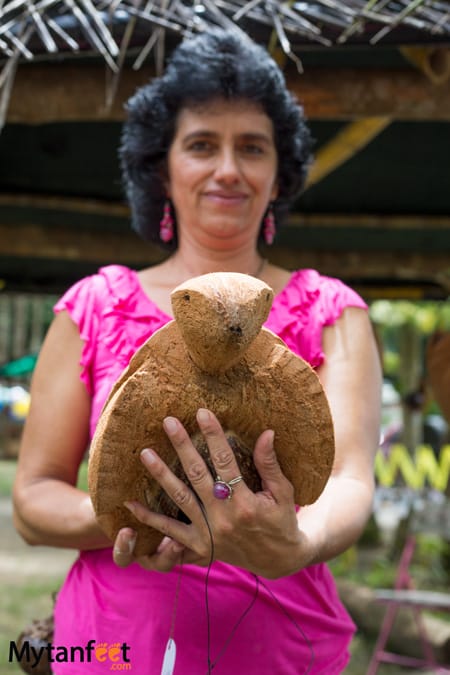
You’ll be helping the lives of the local people which is so important as many Costa Ricans depend on tourism for their livelihood. And since the tourism is highly competitive, your dollar to go to the locals, not the shareholders of the giant international resort chain.
Another way to be an eco-friendly traveler is to use reef safe sunscreen. A lot of people don’t think about this but many sunscreen brands are harmful not just to humans, but to the coral reef. Since so many people surf, swim, snorkel and scuba dive in Costa Rica, we highly recommend you to use reef safe (mineral) sunscreen such as Raw Elements, Stream 2 Sea and Sunology.
We can all do our part to be a responsible traveler and by doing so in Costa Rica, I guarantee you will have a richer, more profound experience here.
Read more Costa Rica travel tips below!
This post has affiliate links.

Jim B says
Excellent article on protecting sloths and wildlife. . During our last trip, I saw 3 example of locals taking the time to help sloths. Outside of Quepos, locals were gently using a long stick to prevent sloth from heading to power lines. They were waiting for animal conservation to arrive. I also saw 2 instances where local stopped on roads to remove sloths. Obviously they knew how to handle these wonderful creatures.
kent says
hi again. really informative article – i will review it again closer to when we go. You menioned to report people handling sloths or offering photos- who would you report them to?
Sammi says
You can report them to the Minae, the government sector of the environment and energy: http://www.minae.go.cr/ You can also tell reputable sloth centers like The Sloth Institute or Toucan Rescue Ranch and ask if they can help you report them since they’ll know exactly who to report it to.
Brenda says
I just got back from a month in Costa Rica. I planned the whole trip myself. Your blogs were extremely helpful, and I told lots of travelers about you. I took shared shuttles at first, then was brave enough to take buses. Again, your posts were so helpful in both those areas. Can’t thank you enough for all the helpful information.
Sammi says
Hi Brenda, we’re very happy to hear that! I’m glad you used the public transportation for some of your trip, it’s such a great way to experience the local life (plus it’s cheap!). I hope you had a great time in CR!